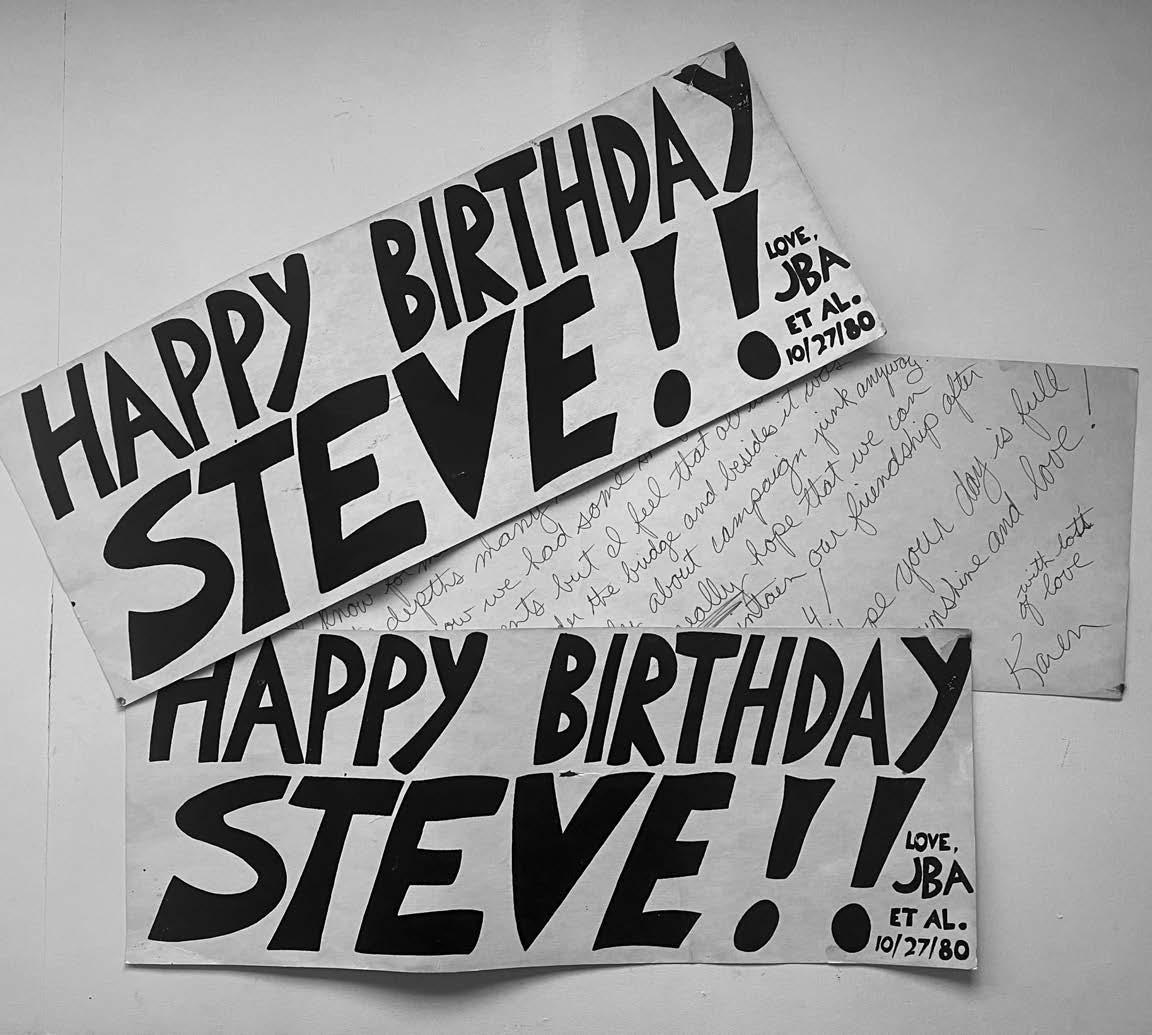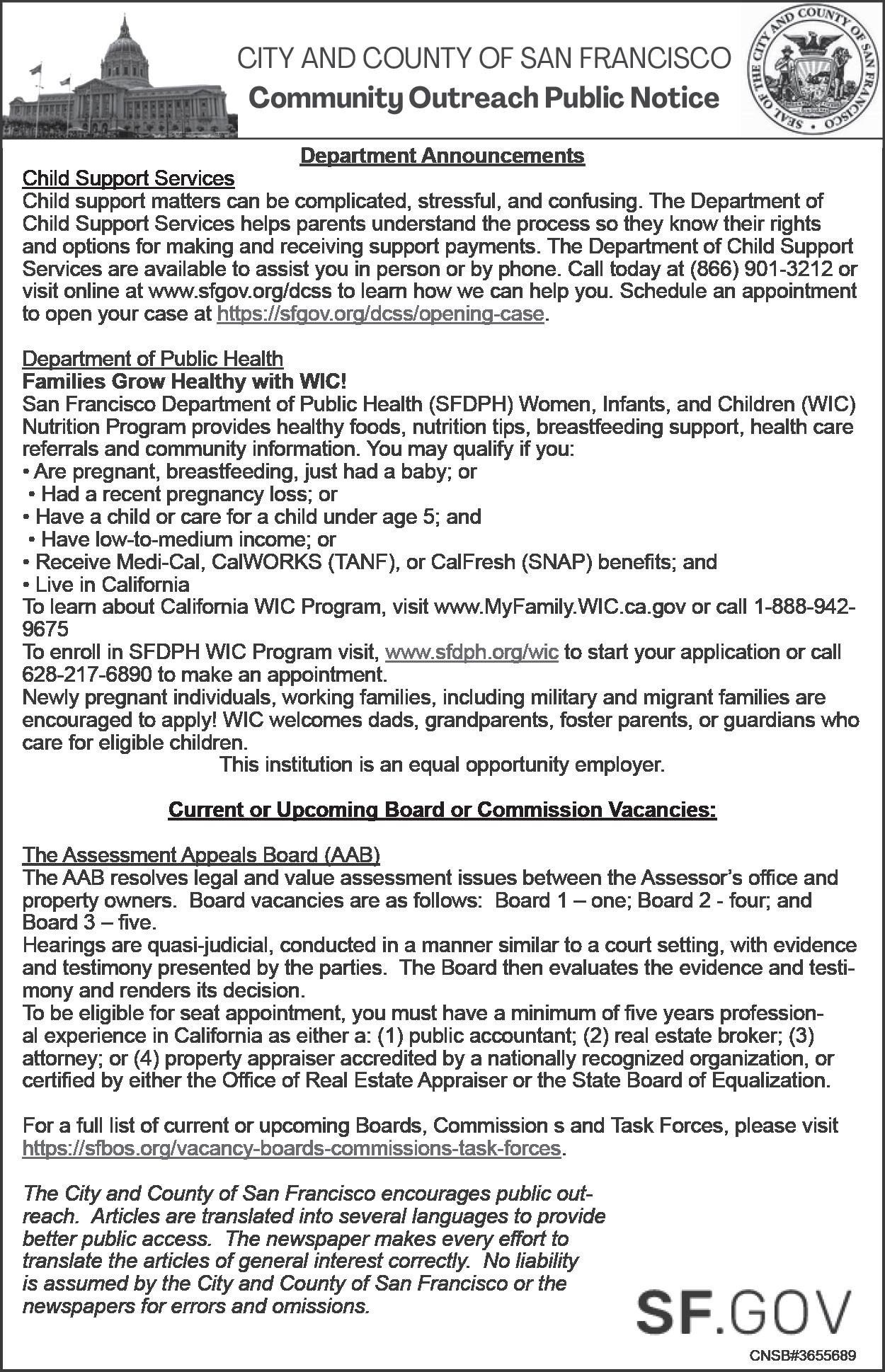
4 minute read
What’s in Your Closet?
BY STEVEN J. MOSS
If you’re like me, you have boxes in your closet or garage filled with “precious” memorabilia from your past.
Advertisement
Letter from long ago lovers, international correspondence sent by friends and family written on tissue-thin, blue-toned stationary, curios collected at roadside attractions, photographs, foreign stamps and coins, elementary school report cards, certificates of commendation and graduation. You save these things because you can’t throw them away, knowing that when you die that’s exactly what will happen.
In 1980 I was a sophomore at the University of California, Berkeley, majoring in Conservation of Natural Resources. After an intensely lonely freshman year, I’d became mesmerized by John B. Anderson, who was running against George H.W. Bush and Ronald Reagan to be the Republican Party candidate for President. Anderson was a straight-talking socially liberal fiscally conservative Republican, in favor of gun control and raising gasoline taxes. The kind of politician that’s now extinct.
At Berkeley Anderson attracted a dedicated group of volunteers, some of whom became my closet college friends. Brad, a talented graphic artist cum mechanical engineer, retired early after a career at Hewlett-Packard. Karen, like me, went on to attend graduate school at the University of Michigan before shifting to landscape design. Donia pursued a doctorate in political theory, for a time disappeared into an East Coast cult, reemerging late in life as a music director at a Unitarian Church. Warren installed a television in his car’s dashboard so he could watch shows while he drove long distances. Jonathan, with whom I later lived in Washington, D.C., works for the U.S. State Department, posted around the world. In various formations we stumbled through our young adulthood together, making mistakes and having the profound, funny, fantastical experiences that gave birth to who we ultimately became.
On my 20th birthday, after a day volunteering at the campaign’s San Francisco headquarters – Anderson had lost the Republican nomination and was running as an independent – I drove to my in-law apartment in the Berkeley Hills. As I hit the northern edge of campus, I started to see placards affixed to telephone poles. They were like campaign posters, but instead of pimping a candidate they shouted, “Happy Birthday, Steve!!” Dozens of them, block by block, leading me home. Brad had silk-screened them, my friends had stapled them to the poles, sometimes, I learned later, standing on car hoods to do so.
I smiled all the way home. I’m still smiling, more than forty years later.
Tell us what’s in your closest! Send photographs and short narratives to editor@potreroview.net
Potrero View Local Businesses Directory Classified Ads
Freelance
Wanted
Notices
The View accepts legal notices. Please contact: production@potreroview.net; 415.643.9578.

Bradley Angel, director of Greenaction, a health and environmental justice nonprofit, said he’s concerned that the Port’s strategies fail to address the potential for contaminated water and soil from Port property and the Hunters Point Shipyard to spread into the Bay and through adjacent neighborhoods.
“We are reaching out to the Port about how it, government agencies, and industry will address shoreline contamination and the threat posed by rising sea levels and groundwater,” said Angel.
Muir Beach Studio and House
Walking distance to the beach, with the crashing waves visible and audible.
Studio: Cozy studio comfortable for two-people. Includes kitchenette and private patio. $200/night plus cleaning fee, two-night minimum. Editor@ potreroview.net or 415.643.9578.
House: Three bedrooms, two full baths, with two decks. $400/night, two-night minimum. Editor@potreroview.net or 415.643.9578.
formation of the City’s shoreline.
“The Exploratorium’s Bay Observatory is a gallery that brings the changes in the shoreline to life. We’re using exhibits with historic maps and tidal gauges to explain how sea level rise could change the Southern Waterfront,” said Schwartzenberg.
The Exploratorium hosts walking tours led by the American Society of Landscape Architects to explain sea level rise to landscape architects and other professionals.
them back from the water,” said Rogers. “Communities along the southern waterfront will likely need to find more open space opportunities if sea level rise subsumes a percentage of their parks.”
Varat confirmed that some waterfront commons, including Crane Cove Park, would remain open to the public even as portions are submerged.
“We don’t anticipate sea level rise will impact Oracle Park or Mission Rock for quite some time,” said Jack Bair, San Francisco Giants’ executive vice president and a Southern Waterfront Advisory Committee member. “We have also designed Mission Rock to be resilient, raising the site substantially in anticipation of sea level rise.”
Ginny Stearns, who lives in a houseboat on Mission Creek, said she prefers a strategy involving tidal gates to permit Bay water to flow in and out of Mission Creek.
“Alternatively, the Port could close off the creek and pump water out. It could make Mission Creek a park and build structures there. That would involve relocating the houseboat residents and destroying a special wetlands habitat. Our lease is up in 2055. Either way you cut it, pumping water in or filling the creek would prevent closing it off and it becoming a stinky marsh,” said Stearns.
“I am worried that strategies I’ve seen so far don’t address separating sewer water from stormwater and seawater,” said Elena Bondareva, a Mission Creek houseboat resident. “This mixing is an utter waste. I am also concerned about how it would affect us and other residents along the Southern Waterfront as the sea level rises.”
Toby Levine, a Mission Bay resident who has been advising the Port about adaptation strategies since 2001, and is Southern Waterfront Advisory Committee member, said sea level rise could impact public transportation and the Financial District.
“If the repair yards and storage yards flood, how will we have BART and Muni continue? What do we do about Downtown buildings? Right now, many people still don’t see the big picture,” said Levine. “The public has to be fair and understanding with the Port. This is a huge task. Different groups throughout the City will need to compromise to reach a series of agreements.”
Angel added that San Franciscans shouldn’t be asked to pay for adaptation through bonds.

“The energy industry, which has profited from the extraction of oil and is largely responsible for global warming, and the super-rich should pay this cost. Low income and working-class communities of color already bear the cost through the environmental contamination of communities,” said Angel.
Susan Schwartzenberg, senior artist and curator at The Exploratorium, a Port tenant, said the museum is educating the public about the trans -
“In addition, we have a grant called Changing Coastlines through the Gordon & Betty Moore Foundation, which supports scientific discovery and environmental conservation…to work on educational exhibits and programs that discuss sea level rise. We’re talking with the Port about a potential partnership with San Francisco Unified School District on a teacher training program regarding sea level rise,” said Schwartzenberg.
Learn more about the Port of San Francisco’s Waterfront Resilience Program at: https://sfport.com/wrp






